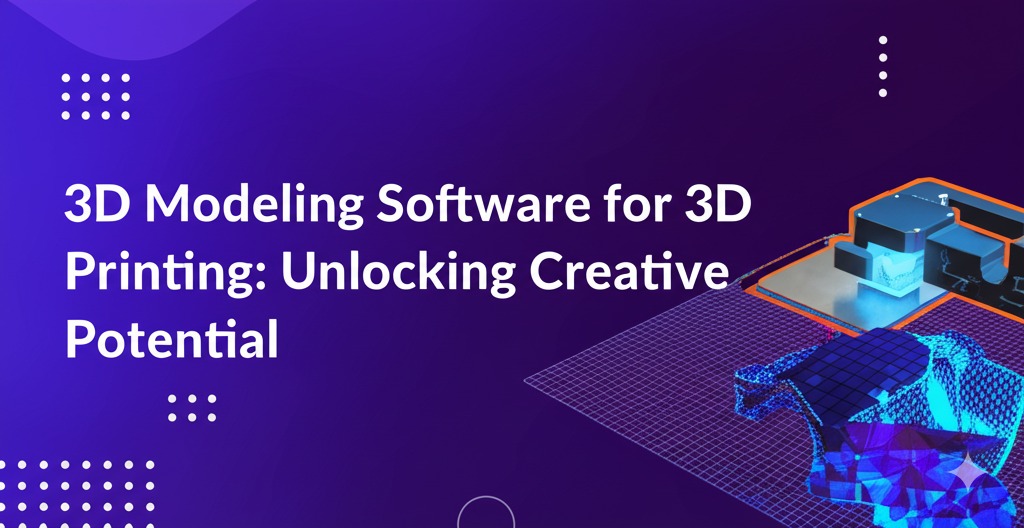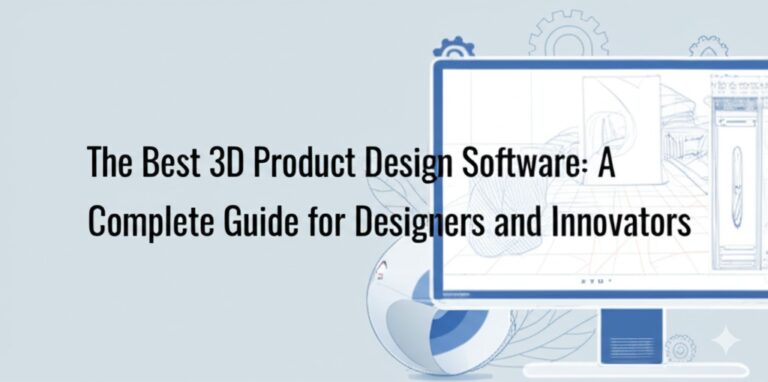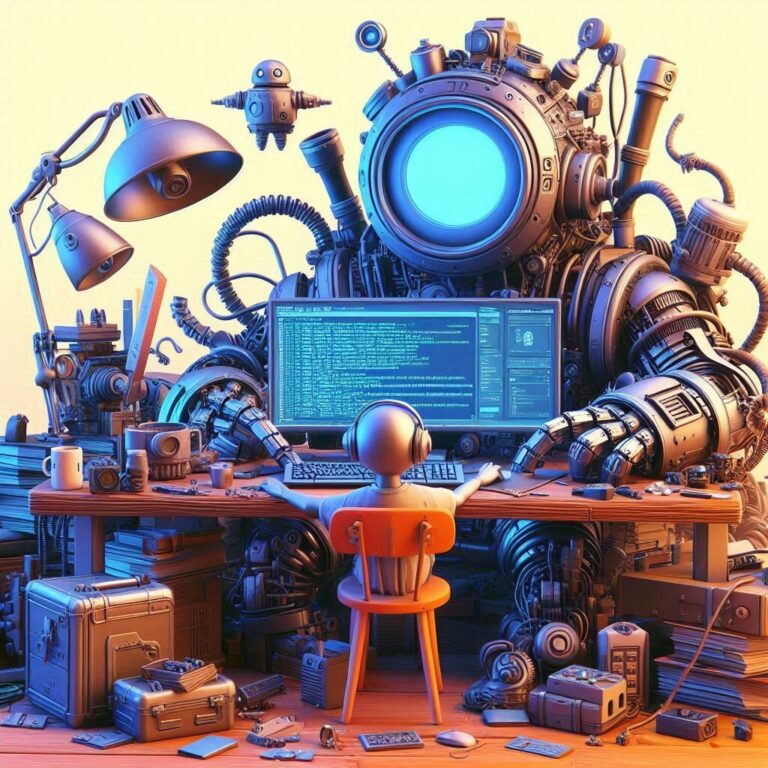3D Modeling Software for 3D Printing: Unlocking Creative Potential
3D printing has revolutionized industries ranging from manufacturing to healthcare, offering limitless possibilities for creating intricate prototypes, personalized products, and even functional components. At the heart of this transformation is 3D modeling software, a crucial tool for designing objects that can be brought to life using 3D printing technology. Whether you are a hobbyist, engineer, or professional designer, choosing the right 3D modeling software for 3D printing can greatly influence the quality and efficiency of your projects.
In this article, we’ll explore the best 3D modeling software for 3D printing, focusing on the features you need, the types of software available, and the benefits they offer. Whether you’re new to 3D printing or looking to enhance your skills, this guide will help you find the ideal software for your needs.
What is 3D Modeling Software?
3D modeling software is a tool used to create digital representations of physical objects. These software programs allow designers to create three-dimensional models that can then be printed using 3D printing technology. The models are usually saved in file formats like STL or OBJ, which are compatible with 3D printers.
For 3D printing, it’s essential that the 3D model is accurate and printable. That means the model must be designed to suit the specific requirements of the 3D printer and the material used. The right software ensures that your designs are not only aesthetically pleasing but also structurally sound and optimized for printing.
Types of 3D Modeling Software for 3D Printing
When it comes to choosing the best 3D modeling software for 3D printing, there are several options available. These software programs vary in terms of features, user interface, and intended audience. Below, we’ll look at three main types of 3D modeling software:
1. CAD (Computer-Aided Design) Software
CAD software is commonly used for engineering, product design, and industrial applications. These programs focus on precision and are perfect for creating parts or products that require exact measurements and geometries.
Popular CAD software for 3D printing:
- AutoCAD: Known for its precision and versatility, AutoCAD is widely used in industries such as architecture and mechanical design.
- Fusion 360: A comprehensive tool from Autodesk, Fusion 360 combines CAD, CAM, and CAE (Computer-Aided Engineering) features in a single package. It’s ideal for both professional and hobbyist designers.
2. Mesh Modeling Software
Mesh modeling is often used for artistic and organic shapes, such as sculptures or characters. These programs allow users to manipulate 3D objects more intuitively, ideal for models that require intricate detail and flexibility.
Popular mesh modeling software for 3D printing:
- Blender: A powerful, open-source software known for its flexibility in modeling, texturing, and animation. Blender is widely used in both professional and hobbyist circles.
- ZBrush: This software is perfect for highly detailed, organic shapes and is frequently used in character modeling for games and movies.
3. Sculpting Software
Sculpting software focuses on creating models in a way that mimics traditional sculpture, allowing for the manipulation of digital clay. This software is often used for highly detailed or artistic models.
Popular sculpting software for 3D printing:
- Mudbox: A sculpting tool from Autodesk that allows artists to create highly detailed models, making it perfect for characters, creatures, or other complex designs.
- Sculptris: A free, beginner-friendly sculpting software that’s great for starting with digital sculpting before moving to more complex tools.
Features to Look for in 3D Modeling Software for 3D Printing
Not all 3D modeling software is created equal, and selecting the right one can make a significant difference in the quality of your 3D print. Here are some key features to look for when choosing 3D modeling software:
1. User-Friendly Interface
The complexity of 3D modeling can sometimes be daunting, especially for beginners. Look for software with an intuitive, easy-to-navigate interface. This will make it easier to get started and streamline your workflow.
2. Compatibility with 3D Printers
Ensure the software is compatible with your 3D printer. Most 3D modeling programs can export files in formats like STL, OBJ, and AMF, which are universally recognized by 3D printers. However, it’s essential to check that the software works well with your specific printer and the material you’re using.
3. Customization Options
Some designs require specific tweaks and adjustments. A great 3D modeling program will offer advanced features like custom settings for texture, material, and geometry, allowing you to tailor your models to your exact needs.
4. Support for Slicing
Slicing is the process of converting your 3D model into a series of layers that your 3D printer will follow during the printing process. Some 3D modeling programs offer built-in slicing capabilities or integrate with slicer programs like Cura or PrusaSlicer for a smoother workflow.
5. Collaboration Tools
If you’re working on a team project, having software with collaboration tools can make a huge difference. Some programs allow multiple users to work on the same project simultaneously, streamlining the design process and improving efficiency.
Popular 3D Modeling Software for 3D Printing
Now that we’ve covered the key types of software and features, here are some of the most popular 3D modeling software programs for 3D printing:
1. TinkerCAD
- Best for: Beginners
- Platform: Web-based
- Key Features: TinkerCAD is a free, easy-to-use software perfect for beginners. It offers basic tools to create simple 3D models and is widely used in educational settings.
2. Blender
- Best for: Artists and hobbyists
- Platform: Windows, macOS, Linux
- Key Features: Blender is open-source and offers powerful tools for modeling, texturing, and rendering. It’s ideal for creating organic shapes and detailed models.
3. Fusion 360
- Best for: Professionals and engineers
- Platform: Windows, macOS
- Key Features: Fusion 360 is a cloud-based software that offers advanced CAD, CAM, and CAE tools. It’s highly suitable for creating precise and functional models for 3D printing.
4. SketchUp
- Best for: Architectural and product designers
- Platform: Windows, macOS
- Key Features: SketchUp is known for its simple user interface and is commonly used for architectural and interior design projects.
5. SolidWorks
- Best for: Engineers and professionals
- Platform: Windows
- Key Features: SolidWorks is a powerful CAD tool used for creating mechanical parts and assemblies. It’s highly regarded in the engineering field for its precision.
Conclusion: Choose the Right Software for Your 3D Printing Needs
Selecting the best 3D modeling software for 3D printing depends on your specific needs, skill level, and the type of projects you plan to create. Whether you’re just starting out with TinkerCAD, diving into detailed models with Fusion 360, or exploring artistic creations with Blender, there’s software out there for everyone.
As the 3D printing world continues to evolve, staying up-to-date with the latest software and tools will ensure you remain at the forefront of innovation. So, start experimenting, create your designs, and bring your ideas to life!

Zain Jacobs is a writer for TheNetUse, providing in-depth reviews, tips, and insights on the latest software apps to help users maximize their digital experience.






